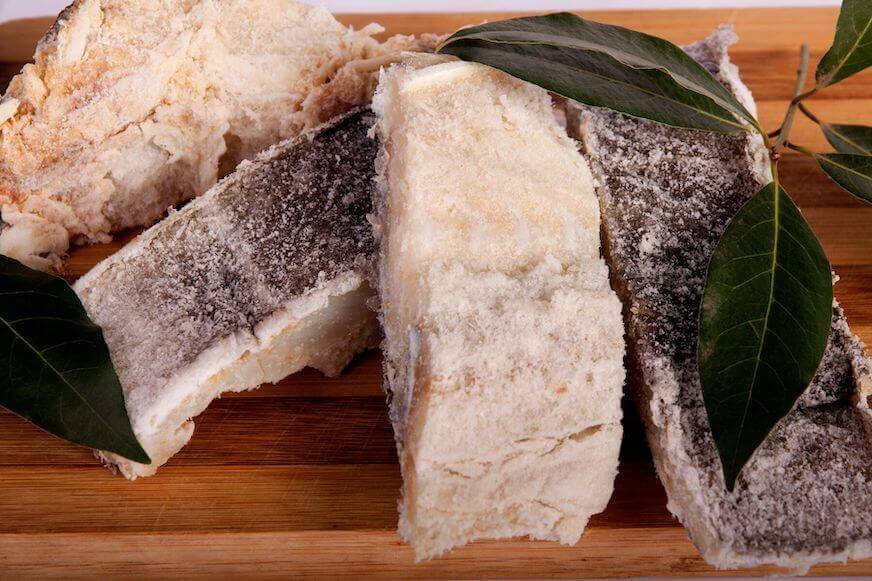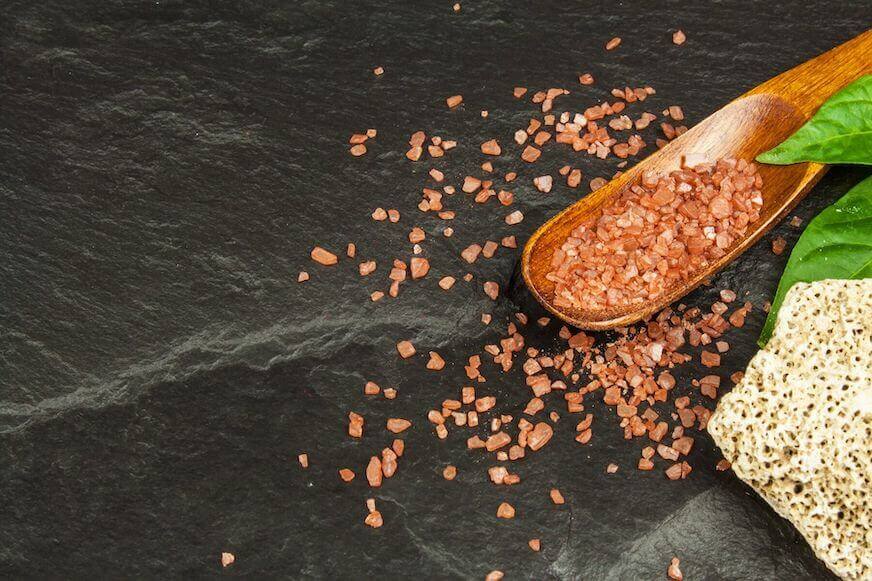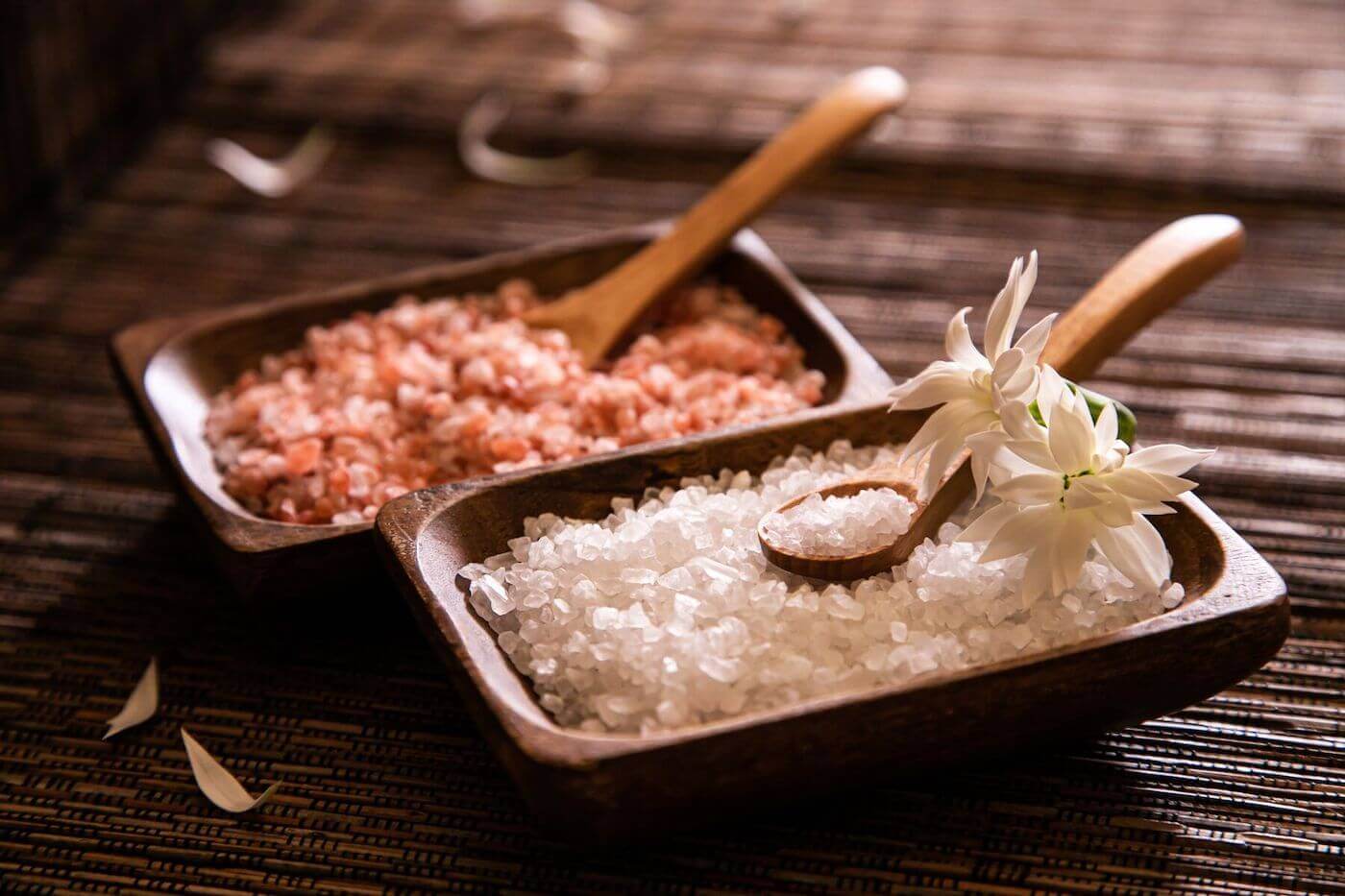Different Types of Salts: How to Choose the Perfect Salt for Every Dish
Every chef knows the satisfaction of adding a pinch of this and a pinch of that until the right blend of flavors emerges from a pan on the stove. Part science, part intuition, a perfectly seasoned dish often comes together sprinkle by sprinkle.
Of course, the first pinch we usually think of is salt. A seemingly nondescript, simple ingredient, salt can make or break a recipe. And if you grew up using table salt for cooking or the occasional kosher or sea salt, you might be surprised to find out there are dozens more varieties out there and a range of flavors at your disposal.
Read on to discover more, from the humble table salt to more gourmet versions.
Salt, Redefined—When Chemistry Can Be Delicious
To understand which type of salt to use and when, it can be helpful to first understand what salt is. Chemically speaking, salt is an ionic compound (oppositely charged ions) in which an atom of sodium and an atom of chlorine have bonded together in a chemical reaction to form sodium chloride.
Salt can be used as a binder, a stabilizer, or a preservative, and of course, when used in cooking, it enhances flavors.
We interpret food through both taste and flavor. Taste is one of our five senses and usually includes the qualities of sweet, sour, salty, bitter, and savory or umami. Flavor includes a variety of sensations in addition to taste, including those that are associated with smell, levels of heat or even burning, and the distinction between individual ingredients and dishes.
How does salt enhance flavors?
Salt can enhance flavor by interacting with the taste receptors on your tongue. It can reduce bitterness by inhibiting the activity of bitter compounds, and it can enhance sweet, sour, and umami, depending on its concentration. Another popular thought posits that because salt reduces the amount of water in items, their flavors become more concentrated.
Types of Salt and When to Use Them In Cooking
You use salt in the most delicate pastries and the heartiest stews, but to really elevate the experience, you can choose a specific type of salt with a flavor profile that enhances the dish.
Table salt
Table salt is often considered the most common salt and is sometimes referred to as the “default” salt. A very fine grain salt, it is highly processed and refined, during which “impurities” like calcium and magnesium are removed, and anti-caking agents are added to prevent it from clumping. Table salt has traditionally had iodine added because many people were deficient in it—iodine helps thyroid function—though that practice has declined in recent years.
Table salt is a good all-around salt that can be used in most recipes, though some find that it can have a metallic flavor.
Kosher salt
Kosher salt is typically the go-to choice for chefs. A coarse, flake, or fine grain salt that comes from rock salt deposits, the large crystals dissolve easily and, because it doesn’t have anti-caking agents, its taste is considered more “pure” or “clean” than table salt. That’s likely due to the fact that it boasts a 97.5% salinity, meaning you can get more flavor out of it with less application. That, combined with its ability to dissolve, makes it easy to use. Kosher salt is great for seasoning meats and poultry, and it is also good for brining and curing. If you use it when baking, make sure it’s dissolved well.
One Note: “saltiness” can vary by brand, so be sure to understand the salinity so you can measure accordingly. Most notably, chefs and home cooks will debate the merits of Diamond Crystal versus Morton kosher salt. The two are processed differently, resulting in different sizes and shapes of the crystals; Diamond’s are hollow, pyramid shapes while Morton’s are thinner and flatter—meaning Morton will weigh more per volume. So a tablespoon of Morton will be much saltier than a tablespoon of Diamond.
Sea Salt
Sea salt is made by evaporating seawater and can be fine or medium grained, though it is typically used in coarse grain. It is used in sweet or savory recipes and contains a lot of minerals. It’s often used as a finishing salt, sprinkled on top of cookies and caramels, for example. It is also popular in bath scrubs and hair products.
Sea salt contains about 40 percent sodium, which is similar to table salt. The American Heart Association found that the majority of people assume sea salt has less sodium, which is incorrect; however, because the crystals are often larger, a teaspoon of sea salt might have less sodium than table salt because fewer crystals fit on the spoon, the Association said.
Himalayan Pink Salt
Himalayan pink salt is a distinctive pink-colored salt harvested from the Khewra salt mine in Pakistan. An unrefined salt that’s been the subject of a lot of trendy health claims, it’s popular for its use in salt lamps and salt chambers (medicinal claims of air purification, respiratory benefits, and the like have not been proven).
Himalayan pink salt is similar to table salt and sea salt but also pricier. That, combined with its unique flavor and low 37% sodium content make it better-suited to be a garnish than a cooking tool. It’s a very pretty decoration for chocolates and desserts, for example.

Salt is often used to season fish and poultry or meat, adding flavor and sometimes crunch.
Celtic Grey Sea Salt
Celtic grey sea salt, also known as sel gris—French for “gray salt”—is harvested from clay-lined salt ponds off the coast of France. It has an irregular texture, and its 34% sodium makes it a good finishing salt for roasted vegetables, meat, and seafood.
Fleur De Sel
French for “flower of salt,” fleur de sel is hand harvested from the Brittany coast in France, skimmed from the top of saltwater undergoing evaporation. It has a light flavor and is sometimes referred to as a “wet” or somewhat oily salt. Its delicate flakes often stick together.
Fleur de sel is very expensive and is used as a finishing salt. It can add crunch when sprinkled over a pan-roasted chicken or roasted vegetables.
Flake Salt
Flake salt is harvested from evaporated seawater and has thin, flat crystals with a large surface area. It has a low mineral content.
This salt is best used as a finishing salt; it is absorbent and sticks to foods. It goes well with meat and fish as well as on vegetables. Because it is highly absorbent, it is also used in the process of koshering meat, or preparing meat in a way that removes the blood and is part of the process of making food that complies with kosher dietary law.
Red Hawaiian salt
Red Hawaiian salt is made from ground red volcanic clay from Hawaii. It contains alaea, or volcanic red clay, the iron oxide of which gives this salt its color.
This salt is used in a variety of Hawaiian dishes like kalua pig and poke, and is also used to season and preserve meats and fish. It is good for sautes and roasts and is also used in religious ceremonies.

Hawaiian alaea salt is very coarse and has a distinctive look that’s a far cry from table salt.
Black Hawaiian Salt
Black Hawaiian salt is harvested in Hawaii and mixed with activated charcoal from lava.
This salt is considered “earthy” and has a sulfur aroma. It is often used in vegan dishes to mimic the flavor of eggs. It is less salty than others and often needs to be paired with another type of salt to complete the flavor profile.
Smoked Salt
Smoked salt is often made with Kosher or coarse sea salt via a smoking process with wood; its flavor and color depend on the type of wood and how long it was smoked.
This type of salt is used in savory dishes to add a smoky flavor.
Himalayan Black Salt
Also known as kala namak, this black salt has a strong flavor, similar in some ways to Hawaiian black salt in that it is egg-like and used in a lot of vegan recipes.
It is quite pungent and used in small quantities. You’ll often find it in curry and spicy dishes and other Indian recipes.
Pickling Salt
Pickling salt is a coarse salt with no anti-caking agents. Like Kosher salt, it is dissolved in brine when pickling.
Flavored Salts
Also called seasoning salts, flavored salts are typically made from Kosher or sea salt and include things like herbs and spices. They are used with meat, poultry, fish, and vegetables. These include truffle salts like black or white truffle salts.
Flavored salts are generally used with savory items. They can include an endless variety of flavor combinations, from the aforementioned truffles to ingredients like whiskey, espresso, ginger root, different kinds of peppers, mushrooms … you name it.
When Did We Start Putting Salt On Food?
The discovery of salt and its use by humans in cooking is difficult to pinpoint, but most sources point to the Sichuan province of China around 3,000 BCE and agree that it was also found among ancient Egyptians, who used it to cure fish and meat. It became such a vital commodity that it was sometimes used as a form of pay, giving us the term “salary” we still use to describe our income.
“I went to a salt mine in China. It is the best salt I have ever had. The process has not become modernized, so it was brilliant to see the work and production of the salt as it would have been in ancient times.”*
Jey Kempin, Escoffier Chef Instructor, Culinary Arts, Plant-Based Culinary Arts, General Education
It is mined, harvested, and obtained via evaporation using heat sources. The location, type of processing, and what’s added or stripped from salt determine its type.
Although many people use the words “salt” and “sodium” interchangeably, they’re actually different. Salt is a compound, while sodium is a mineral element found within salt.
Our bodies need sodium “to conduct nerve impulses, contract and relax muscles, and maintain the proper balance of water and minerals,” per the Harvard T.H. Chan School of Public Health, which says we need only 500mg a day for those vital functions, It also says that the average American consumes about 3,400mg of sodium per day, or 1.5 teaspoons of salt. The Federal Drug Administration recommends that we consume less than 2,300mg of sodium a day total.
The Right Kind of Salt Can Take Your Cooking to the Next Level
Salt has come a long way from the ancient world to a shaker on the counter. The wide variety of flavors and textures means you have a lot of fun choices in your cooking and baking.
If you’re looking to enhance your cooking skills and find out more about traditional and creative uses for everyday ingredients, explore our online cooking classes. Classes are offered as a partnership between Escoffier Home Gourmet and America’s Test Kitchen. You’ll have access to great recipes and to an Auguste Escoffier School of Culinary Arts Chef Instructor.
Of course, a more formal culinary education may take you even further. Escoffier has a variety of programs to suit your interests, and salt is integral to nearly all of them!
If you’d like to discover more about seasoning and creativity in your home kitchen, try these articles:
- 5 Spices to Use Instead of Salt
- What Spices are Used in French Cooking?
- 7 Ways to Thicken Vegan Recipes
This article was originally published on July 7, 2013 and has since been updated.


